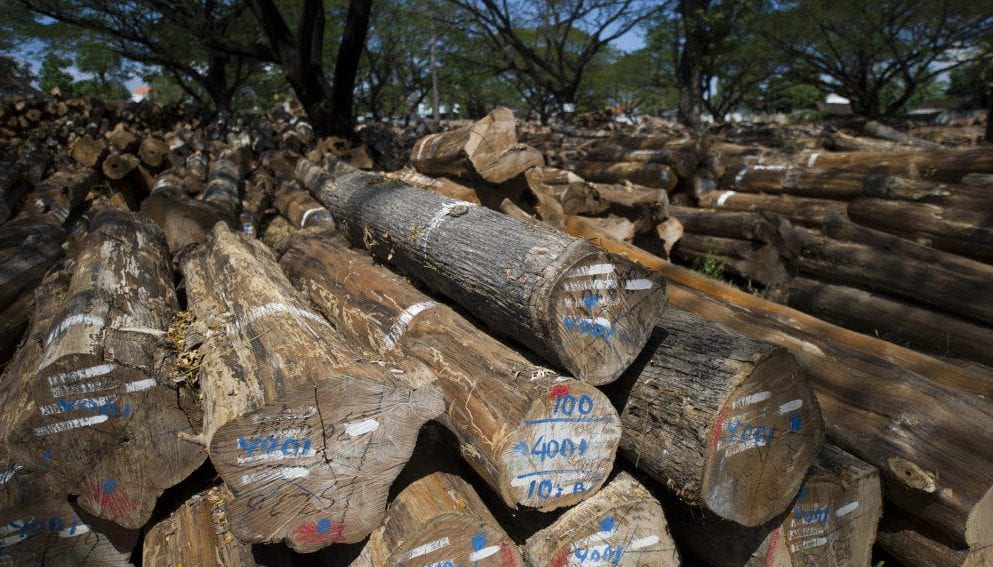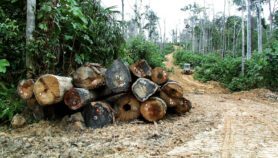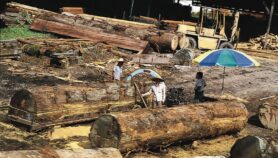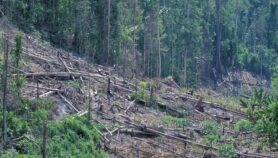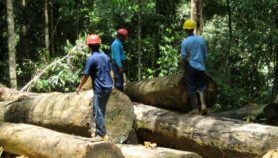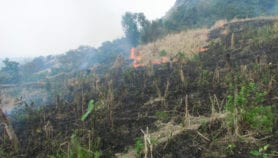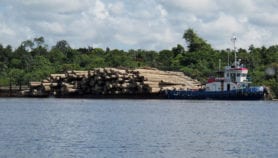Send to a friend
The details you provide on this page will not be used to send unsolicited email, and will not be sold to a 3rd party. See privacy policy.
[JAKARTA] Indonesia is increasingly using illegally sourced wood from unsustainable resources — as much as 30 per cent — to meet the demands of the country’s booming pulp and paper industry, a study says.
Widespread corruption and mismanagement, the failure of the state-backed industrial forest plantation programme and unchecked deforestation are reasons behind this trend, says a report by Forest Trends and the Anti Forest-Mafia Coalition, which are NGOs engaged in environment conservation.
The report analysed the difference between the supply of legal wood reported by the Ministry of Forestry and Environmental Issues (KLHK) and the volume of processed wood produced by the timber industry. Based on data from 1991 to 2014, the reported wood supply reached 647 million cubic metres but the industry consumed 866 million cubic metres, resulting in a 30 per cent gap.
The KLHK in an official letter in response to a SciDev.Net inquiry denies the gap between wood supply and wood consumed by the pulp and paper industry. According to Dwi Sudarto, director for KLHK Marketing and Processing of Forest Products, the demand for wood by the industry has been met by plantations and other sources such as “imported logs”.
The Forest Trends and the Anti Forest-Mafia Coalition says a big part of the problem is the Ministry of Forestry and Environment itself.
The ministry does not include smallholder farmers and smugglers in their calculation although both play a significant role in Indonesia’s pulp and paper industry.
Another problem is the ministry’s “self-reporting” style of data collection that is sourced from the timber firms themselves.
Yet another suspect is the failure of the government’s industrial forest plantation programme to put a stop to the increasing rate of illegal logging and deforestation in Indonesia.
Grahat Nugraha, one of the authors of the report and a member of the Anti Forest-Mafia Coalition, says the ministry has committed to revitalise the forestry industry by expanding the industrial forest plantations since 2007. But although the number of plantation areas is increasing, the number of planted trees in those areas is decreasing.
“We are not sure why the plantations have failed to supply legally sourced wood. The reason could be because of land conflicts with indigenous people or the inability of companies to manage their land,” Nugraha says.
Soelthon Gussetya, data manager at Forest Watch Indonesia, a local NGO, admits that the industrial forestry plantations alone cannot meet the commercial demand of the paper and pulp industry.
“The data show that most of the deforestation occurs in primary forests. And this is likely the factor that fills the legal gap in the forest industry,” says Gussetya.
He recommends that the Indonesian government stop the expansion of pulp and paper mills while improving milling capacity until a sustainable harvesting process is met.
This article has been produced by SciDev.Net's South-East Asia & Pacific desk.


